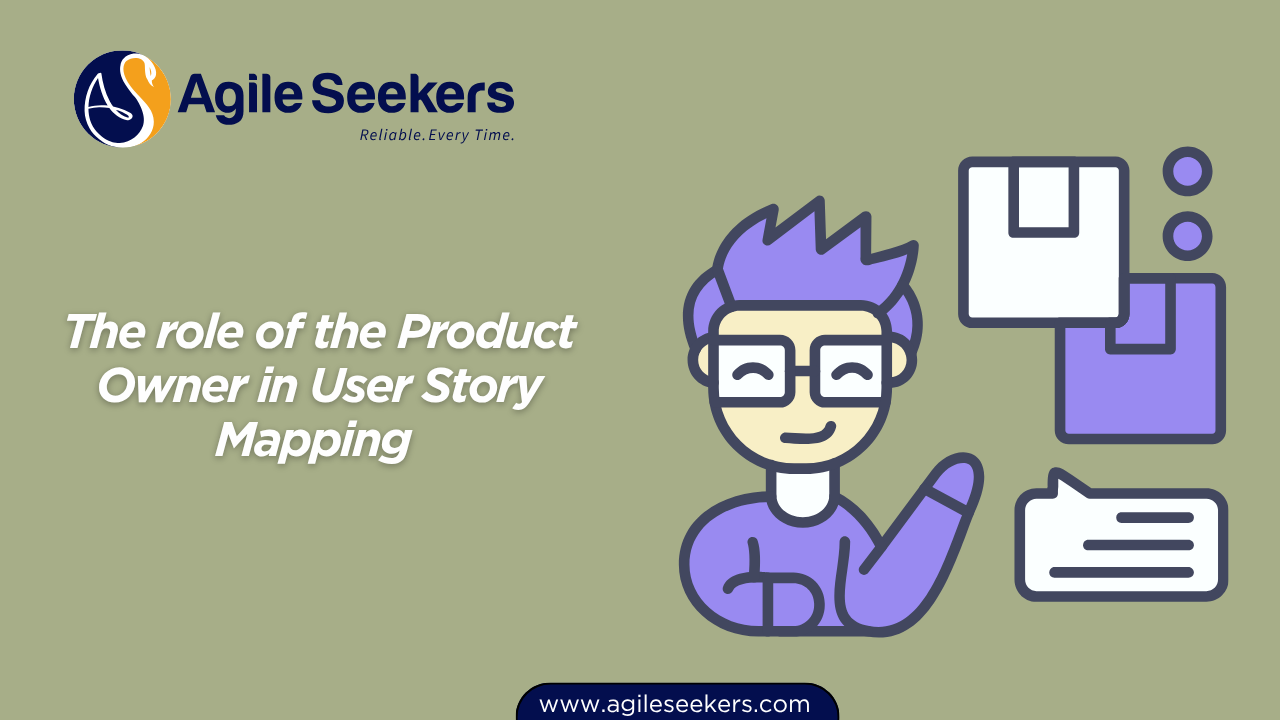The role of the Product Owner in User Story Mapping

User Story Mapping is one of the most practical techniques for turning product ideas into real, valuable outcomes. It helps teams move beyond isolated user stories and see the bigger picture of how users experience the product. At the center of this process is the Product Owner. Their leadership, clarity, and decision-making shape how the product vision becomes a shared map everyone can follow.
This post walks through how a Product Owner supports User Story Mapping from preparation to execution and continuous refinement. If you are working in Scrum or a scaled environment like SAFe, the ability to guide story mapping effectively is a core skill that influences everything from backlog prioritization to stakeholder confidence and team alignment.
What Is User Story Mapping?
A User Story Map organizes work around the end-to-end experience a user goes through to accomplish something meaningful. Instead of listing stories in a flat backlog, the team maps them as activities and steps that reflect real usage.
The structure generally looks like this:
- Activities / User Goals: High-level actions users take
- Tasks / Steps: How users accomplish those goals
- User Stories: Small slices that implement the tasks
This visual layout helps teams:
- See the entire workflow, not isolated tasks
- Avoid building features that don’t add real value
- Slice releases based on meaningful outcomes
- Prioritize based on user impact and learning potential
For deeper context, Jeff Patton’s original work is a strong reference: User Story Mapping by Jeff Patton.
Why the Product Owner Matters in Story Mapping
A map is only useful if the destination is clear. The Product Owner ensures clarity on:
- Who the user is
- What they are trying to achieve
- Why the outcomes matter to the business
Without strong product ownership, story mapping becomes a wall of sticky notes without shared meaning.
1. Setting the Vision and Context
The Product Owner aligns the mapping exercise with the product vision, business objectives, and customer needs. They communicate:
- What problem the feature solves
- Who benefits from the solution
- What success looks like
Skills from Leading SAFe training strengthen the ability to create this alignment at scale.
2. Facilitating Collaborative Mapping Sessions
A User Story Map should be created collaboratively. The Product Owner guides the group toward shared understanding rather than dictating solutions.
During these sessions, the Product Owner:
- Encourages thinking from the user’s perspective
- Ensures clarity and focus in discussions
- Brings business and customer insights into conversation
3. Defining Personas and Journeys
Good story mapping begins with a clear understanding of the user. The Product Owner brings personas, real usage scenarios, customer research, and observed behaviors into the discussion.
Personas should be grounded in evidence, not assumptions.
4. Structuring the Backbone of the Map
The backbone represents the key stages or activities the user performs. The Product Owner ensures the backbone reflects real user behavior rather than internal system functions.
5. Breaking Work into User Stories
Once the backbone and tasks are identified, the map expands into smaller user stories. The Product Owner guides the team to express each story in terms of:
- User intent
- Expected value
- Clear acceptance criteria
6. Prioritizing Based on Value
Story maps reveal value slices that can be released incrementally. The Product Owner determines which slices to deliver first, based on business goals and user outcomes.
This is where training such as the SAFe Product Owner / Product Manager (POPM) certification builds deeper capability to prioritize using data and value impact.
7. Working with Scrum Masters and Teams
The Product Owner collaborates closely with Scrum Masters and development teams to maintain clarity and flow. Skills in facilitation and team alignment, often developed through SAFe Scrum Master certification, help ensure smooth implementation.
For more complex teams or multi-team coordination, experience supported by SAFe Advanced Scrum Master certification training strengthens cross-team synchronization and dependencies.
8. Maintaining the Backlog Using the Map
The story map becomes a living reference used to refine, reprioritize, and clean the backlog. It helps the Product Owner:
- Remove low-value work
- Split large stories with intent
- Plan releases with meaningful outcomes
9. Continuous Feedback and Adaptation
As the product evolves, new data emerges. The Product Owner updates the map to reflect new learnings, ensuring decisions stay grounded in user value.
In larger Agile Release Trains, this is supported effectively with roles trained through SAFe Release Train Engineer certification training.
Final Thoughts
The Product Owner is not simply a backlog administrator—they are the steward of user value. Story Mapping supports this role by creating shared understanding, prioritizing what matters, and aligning everyone toward meaningful outcomes.
When guided effectively, User Story Mapping becomes more than a planning tool. It becomes a shared language of value that guides teams from concept to delivery with clarity and alignment.
Also read - Steps to create your first User Story Map
Also see - Using User Story Mapping to prioritize features that deliver value




















